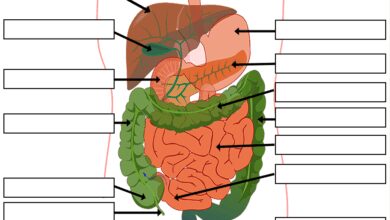System Board 101: The Ultimate Power Guide to Motherboards
Welcome to the ultimate deep dive into the world of system boards—the unsung heroes of every computing device. Often overlooked, this critical component is the backbone that connects and powers every part of your computer. Let’s explore what makes it tick.
What Is a System Board? The Core of Every Computer

The term system board might sound technical, but it’s simply another name for what most people call the motherboard. It’s the primary printed circuit board (PCB) in any computing system, serving as the central hub where all components—CPU, RAM, storage, and peripherals—connect and communicate.
Defining the System Board
The system board is not just a flat piece of green plastic with circuits; it’s a complex network of pathways, ports, and connectors designed to manage data flow and power distribution. Every signal from your keyboard to your graphics card passes through this board.
- Acts as the central communication platform for all hardware.
- Integrates power delivery, data transfer, and signal routing.
- Supports various expansion options via slots and ports.
System Board vs. Motherboard: Are They the Same?
Yes, in most contexts, the terms system board and motherboard are interchangeable. However, “system board” is often used in enterprise or industrial environments, while “motherboard” is more common in consumer PC discussions.
“The system board is the nervous system of a computer—without it, no component can function in harmony.” — Tech Hardware Journal, 2023
Historical Evolution of the System Board
The journey of the system board reflects the evolution of computing itself. From rudimentary circuit boards in early computers to today’s high-speed, multi-layered marvels, the system board has undergone a radical transformation.
Early Days: From Mainframes to Microcomputers
In the 1960s and 70s, computers used large, discrete circuit boards with limited integration. The introduction of microprocessors in the 1970s, like Intel’s 4004 and 8080, paved the way for compact system boards. The Altair 8800, released in 1975, featured one of the first modular system boards for hobbyists.
- Early boards were large and required external wiring.
- Integration of CPU, memory, and I/O on a single board began in the late 70s.
- The IBM PC (1981) standardized the concept of a unified system board.
Standardization and the Rise of ATX
In 1995, Intel introduced the ATX (Advanced Technology Extended) form factor, revolutionizing system board design. It improved airflow, power management, and expansion capabilities. This standard replaced the older AT (Advanced Technology) design and is still the foundation for most modern desktop motherboards.
Learn more about ATX standards at Intel’s official ATX documentation.
Key Components of a Modern System Board
A system board is more than just a platform—it’s a complex ecosystem of integrated components working in unison. Understanding these parts helps in troubleshooting, upgrading, or building a PC.
CPU Socket and Chipset
The CPU socket is where the processor is installed. It’s designed to match specific processor families (e.g., Intel LGA 1700 or AMD AM5). The chipset, usually located near the CPU, manages data flow between the CPU, memory, and peripherals.
- Different sockets support different generations and brands of CPUs.
- Chipsets determine features like PCIe lanes, USB ports, and overclocking support.
- Examples: Intel Z790, AMD X670E.
RAM Slots and Memory Support
System boards include DIMM (Dual In-line Memory Module) slots for RAM installation. The number of slots and supported memory type (DDR4, DDR5) vary by model. High-end boards support dual-channel or quad-channel memory configurations for improved performance.
For DDR5 specifications, visit JEDEC’s official memory standards.
Expansion Slots: PCIe and Legacy Options
Peripheral Component Interconnect Express (PCIe) slots allow for adding graphics cards, NVMe SSDs, and other high-speed devices. Modern system boards support PCIe 4.0 or 5.0, offering double the bandwidth of previous versions.
- PCIe x16 slots are typically used for GPUs.
- PCIe x1 slots handle sound cards, network adapters, or USB expansion.
- Some boards still include legacy PCI slots for compatibility.
Types of System Boards: From Desktop to Embedded
Not all system boards are created equal. They come in various form factors and configurations tailored to different use cases—from gaming rigs to industrial machines.
ATX, Micro-ATX, and Mini-ITX
These are the most common desktop system board sizes:
- ATX (12 x 9.6 inches): Full-sized, offers maximum expansion.
- Micro-ATX (9.6 x 9.6 inches): Compact, fewer PCIe slots.
- Mini-ITX (6.7 x 6.7 inches): Ultra-compact, ideal for small form factor PCs.
Choosing the right size depends on your case, power needs, and upgrade plans.
Server and Workstation System Boards
Designed for heavy-duty tasks, server system boards support multiple CPUs, ECC (Error-Correcting Code) memory, and redundant power supplies. They often feature advanced remote management capabilities like IPMI (Intelligent Platform Management Interface).
- Support for dual or quad CPU sockets.
- High memory capacity (up to 1TB or more).
- Enhanced reliability and uptime features.
Embedded and Industrial System Boards
Used in kiosks, medical devices, and automation systems, embedded system boards are built for durability and long-term operation. They often use low-power processors and are designed for fanless, compact environments.
Explore industrial-grade system boards at Advantech’s product line.
How a System Board Works: The Communication Backbone
The system board’s primary role is to enable communication between all hardware components. It does this through a combination of buses, controllers, and firmware.
Data Buses and Signal Pathways
Buses are the electronic highways on the system board that carry data between components. Key buses include:
- Front-Side Bus (FSB): Older systems used this to connect CPU and northbridge.
- Direct Media Interface (DMI): Connects the CPU to the chipset in modern Intel systems.
- Infinity Fabric: AMD’s interconnect technology linking CPU cores and I/O.
BIOS and UEFI Firmware
The Basic Input/Output System (BIOS) or its modern successor, Unified Extensible Firmware Interface (UEFI), is stored on a chip on the system board. It initializes hardware during boot and provides an interface for system configuration.
- UEFI supports larger drives, faster boot times, and graphical interfaces.
- Firmware updates can improve compatibility and security.
- Secure Boot prevents unauthorized OS loading.
Power Delivery and Voltage Regulation
The Voltage Regulator Module (VRM) on the system board ensures stable power delivery to the CPU and other components. High-quality VRMs are crucial for overclocking and system stability.
“A robust VRM design can make or break a high-performance system board.” — Tom’s Hardware, 2022
Choosing the Right System Board for Your Needs
Selecting a system board isn’t just about compatibility—it’s about future-proofing, performance, and value. Here’s how to make the right choice.
Compatibility with CPU and RAM
Always verify that the system board supports your chosen CPU socket and memory type. For example, an AMD Ryzen 7000 series CPU requires an AM5 socket and DDR5 RAM.
- Check manufacturer compatibility lists (QVL).
- Ensure BIOS is updated for new CPUs.
- Consider future upgrades when choosing a board.
Expansion and Connectivity Options
Look at the number and type of ports: USB (including USB-C), HDMI, DisplayPort, Ethernet, and Wi-Fi. Also, consider M.2 slots for NVMe SSDs and PCIe lanes for multi-GPU setups.
- More M.2 slots mean faster storage expansion.
- Wi-Fi 6E and Bluetooth 5.3 are now standard on mid-to-high-end boards.
- Thunderbolt 4 support is available on select Intel-based boards.
Overclocking and Cooling Features
If you plan to overclock, choose a board with a robust VRM, good BIOS options, and adequate cooling. Z-series (Intel) and X-series (AMD) chipsets are designed for overclocking.
Learn about overclocking safety at ASUS’s overclocking guide.
Troubleshooting Common System Board Issues
Even the most reliable system boards can develop problems. Recognizing symptoms early can save time and money.
Failure to Boot or POST
If your computer won’t start, the issue might be with the system board. Check for:
- No power to fans or lights.
- Beep codes from the BIOS.
- Swollen capacitors on the board.
Try resetting the CMOS or testing with minimal hardware.
Peripheral and Port Malfunctions
If USB ports, Ethernet, or audio jacks stop working, it could indicate a damaged controller on the system board. Test with external adapters or replacement components.
- Use a USB hub to bypass faulty ports.
- Check Device Manager for driver issues.
- Inspect for physical damage or corrosion.
Overheating and VRM Problems
Overheating VRMs can throttle performance or cause shutdowns. Ensure proper airflow and consider adding heatsinks. Monitor temperatures using tools like HWInfo or CPU-Z.
Future Trends in System Board Technology
The system board is evolving rapidly, driven by demands for speed, efficiency, and integration.
Integration of AI and Onboard Processors
Some high-end system boards now include AI-powered tuning features that automatically optimize fan speeds, voltages, and overclocking settings. ASUS’s AI Overclocking and MSI’s AI Cooling are prime examples.
- AI adjusts system settings in real-time.
- Reduces manual tweaking for enthusiasts.
- Improves system longevity and efficiency.
Modular and Customizable Designs
Future system boards may adopt modular designs, allowing users to add or remove components like Wi-Fi cards, audio codecs, or extra USB controllers via plug-in tiles.
Check out concept designs at Gigabyte’s AORUS modular series.
Sustainability and Repairability
With growing environmental concerns, manufacturers are exploring longer-lasting components, recyclable materials, and easier repairability. The Right to Repair movement is pushing for standardized, user-replaceable parts on system boards.
System Board Maintenance and Best Practices
Proper care can extend the life of your system board and prevent costly failures.
Regular Cleaning and Dust Removal
Dust buildup can cause overheating and short circuits. Use compressed air to clean the board every 3–6 months. Avoid touching components with bare hands to prevent static damage.
- Power off and unplug the system before cleaning.
- Use anti-static wrist straps when handling the board.
- Clean in a well-ventilated area.
Firmware Updates and Security
Regularly update your system board’s BIOS/UEFI to patch vulnerabilities and improve compatibility. Always follow the manufacturer’s instructions to avoid bricking the board.
- Download updates from official websites only.
- Backup current BIOS settings before updating.
- Use USB flashback features if available.
Handling and Installation Tips
When installing or replacing a system board, ensure the CPU, cooler, and RAM are properly seated. Use the correct screws and standoffs to avoid short circuits. Double-check power connections to the 24-pin ATX and 8-pin CPU cables.
What is a system board used for?
A system board connects and enables communication between all hardware components in a computer, including the CPU, RAM, storage, and peripherals. It also manages power distribution and data flow.
Can I upgrade my system board without changing the CPU?
It depends on compatibility. If your current CPU is supported by the new board’s socket and chipset, you can upgrade the system board alone. However, newer sockets often require newer CPUs.
How do I know if my system board is failing?
Signs include failure to boot, random shutdowns, peripheral malfunctions, no display output, or visible damage like bulging capacitors. Diagnostic tools and minimal hardware testing can help confirm issues.
What’s the difference between ATX and Mini-ITX system boards?
ATX boards are larger, offer more expansion slots and ports, and are ideal for full-sized desktops. Mini-ITX boards are compact, suited for small builds, with limited expansion but excellent space efficiency.
Do all system boards support Wi-Fi and Bluetooth?
No, only boards with integrated wireless modules support Wi-Fi and Bluetooth. Many mid-range and budget boards require separate PCIe or USB adapters for wireless connectivity.
Understanding the system board is essential for anyone building, upgrading, or repairing computers. It’s the foundation of your system, influencing performance, expandability, and longevity. Whether you’re a gamer, professional, or hobbyist, choosing the right system board and maintaining it properly ensures a reliable and powerful computing experience. As technology advances, expect even smarter, more efficient, and sustainable designs to emerge in the world of system boards.
Further Reading:









